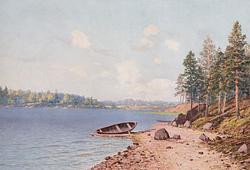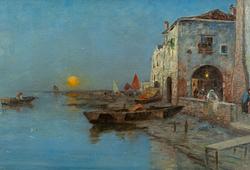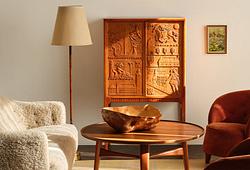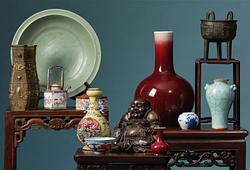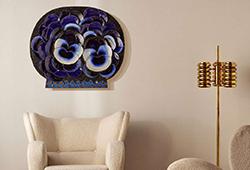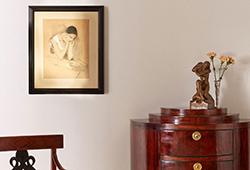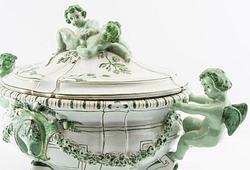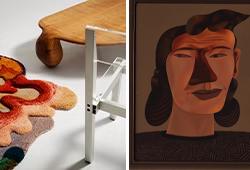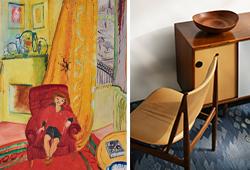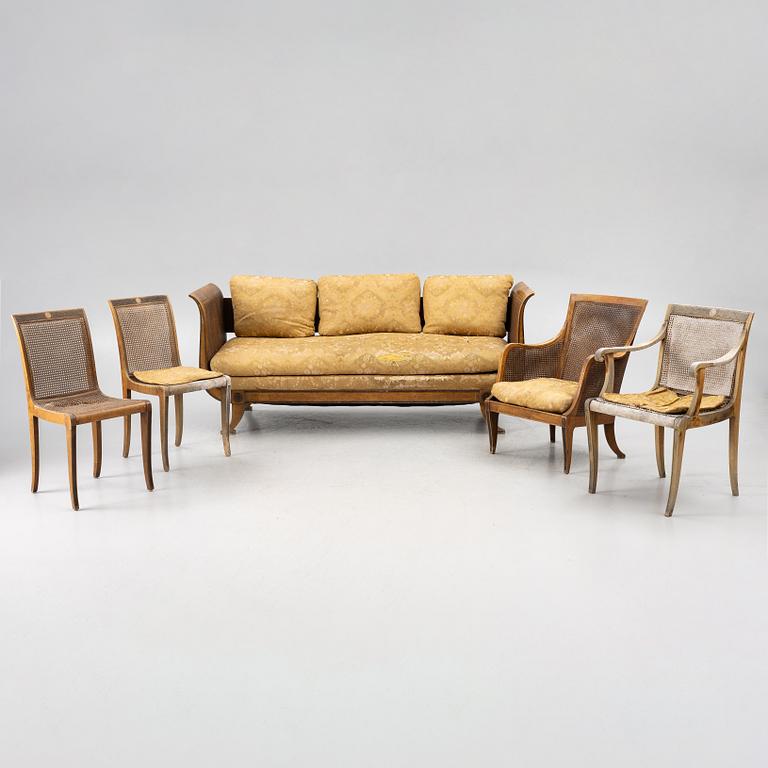Carl Malmsten
Carl Malmsten, a five piece furniture group, Nordiska Kompaniet, late 1920s.
Consisting of: Sofa with a frame of half-polished mahogany, root veneer, and rattan. Tight seat and loose cushions in the seat and back. Brand marked. Length 205, seat height 46, height 85 cm. Chairs, a pair, frame of half-polished mahogany. Seat and backrest of rattan. One example with a loose seat cushion. Brand marked. Seat height 46, height 87.5 cm. Armchair with a frame of birch. Seat and backrest of rattan. Accompanied by a loose seat cushion. Brand marked. Seat height 46.5, height 88 cm. Armchair with a frame of half-polished mahogany. Seat and backrest of rattan. Loose seat cushion. With inscription Professor Malmsten. Seat height 38, height 84.5 cm.
Kulumaa. Paikoin laaja kulumaa. Vauriot. Kuivahalkeamia. Jälkiä. Tahroja. Voimakkaita lohkeamia sohvan takajaloissa. Karmituolissa huomattavaa epävakautta ja halkeamia liitoksissa.
Muut tiedot
The sofa and the pair of chairs exhibited at the Nordiska Kompaniet exhibition in 1928.
Suunnittelijat
Carl Malmsten is one of Sweden's most famous furniture designers. Many of his furniture are considered modern design classics, for example, the cane chair "Lilla Åland", the armchair "Farmor", the sofa "Samsas", the cabinet "Herrgården", and the furniture series "Vardag".
Both "Lilla Åland" and "Vardag" adopted the ideals of "beautiful everyday goods" of the 1940s. Their neat shape and frugal design quickly became timeless interior details that we still see in many homes today.
At the beginning of his career, Malmsten interned at various carpentry workshops and studied furniture at Nordiska museet and Skansen. He had his breakthrough in 1916 when he was commissioned to design part of the interior of Stockholm's City Hall.
During his career, Malmsten collaborated with several architects, such as Ragnar Östberg, Ivar Tengbom, and Ferdinand Boberg. He designed furniture for Stockholm's concert hall and Ulriksdal castle. He participated in the now iconic hosing exhibition at Liljevalchs gallery in 1917, where the term "Beautiful everyday goods" was coined.




